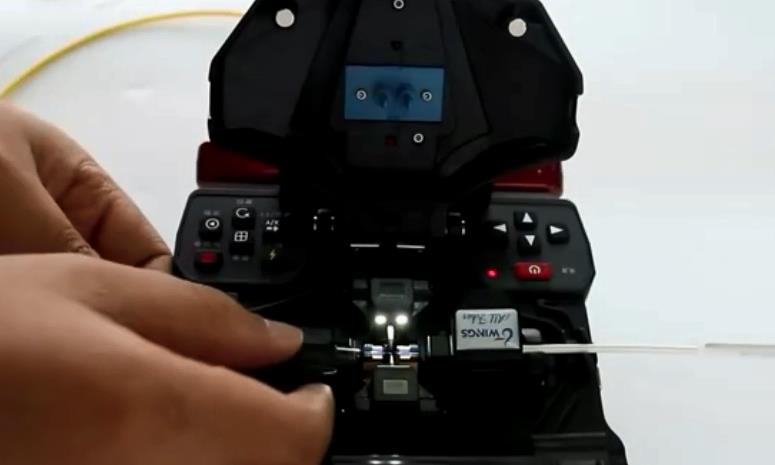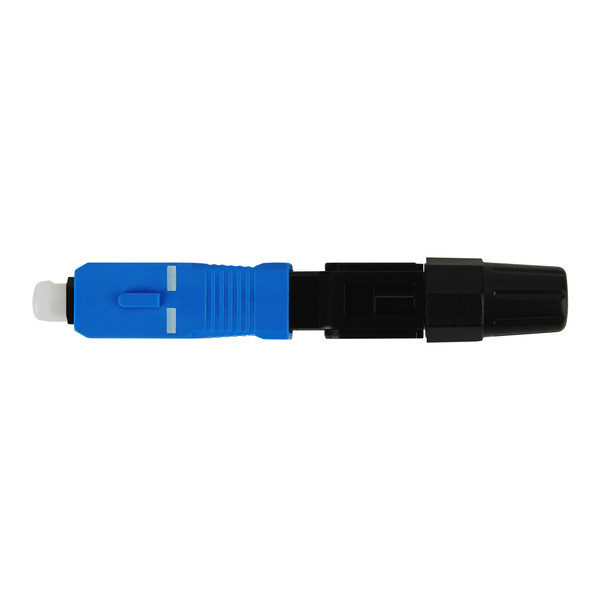Introduction to Optical Fiber
Optical fiber is a fiber made of glass or plastic, and it is also a light transmission tool that uses the principle of total internal reflection in these fibers to transmit light.
The transmitting device at one end of the optical fiber uses a light-emitting diode or a laser to send the optical pulse signal into the optical fiber, and the receiving device at the other end of the optical fiber detects the pulse signal using a light-sensitive component. A cable that contains optical fibers is called a fiber optic cable.
The world’s first optical bare fiber was made by K.C.Kao, the father of optical fiber.
Classification of Communication Fibers
According to the classification methods of different fiber classification standards, the same fiber will have different names.
Classification by fiber material
According to the material of the optical fiber, the types of optical fibers can be divided into silica optical fibers and all-plastic optical fibers.
Silica fiber generally refers to an optical fiber composed of a doped silica core and a doped silica cladding. This fiber has very low loss and moderate dispersion. At present, the vast majority of communication fibers are silica fibers.
All-plastic optical fiber is a new type of optical fiber for communication, which is still in the development and trial stage. All-plastic optical fiber has the characteristics of a large loss, thick core (100-600 μm in diameter), large numerical aperture (NA) (usually 0.3-0.5, which can be coupled with light sources with large spots), and low manufacturing cost. Currently, all-plastic optical fibers are suitable for shorter-length applications such as indoor computer networking and communications within ships.
Classification by fiber profile refractive index distribution
According to the different refractive index distributions of the optical fibers, the types of optical fibers can be divided into step fibers and graded fibers.
Classification by transmission mode
According to the number of modes of optical fiber transmission, the types of optical fibers can be divided into multi-mode fibers and single-mode fibers.
Single-mode fiber is a fiber that can transmit only one mode. Single-mode fiber can only transmit the fundamental mode (the lowest order mode), there is no inter-mode delay difference, and it has a much larger bandwidth than multi-mode fiber, which is very important for high-speed transmission. The mode field diameter of single-mode fiber is only a few micrometers (μm), and its bandwidth is generally one or two orders of magnitude higher than that of graded multimode fiber. Therefore, it is suitable for large-capacity, long-distance communication.
Classification according to international standards (classification according to ITU-T recommendations)
In order to make optical fibers have a unified international standard, the International Telecommunication Union (ITU-T) has developed a unified optical fiber standard (G standard). According to the ITU-T recommendations on optical fibers, the types of optical fibers can be divided into:
G.651 fiber (50/125μm multimode graded-index fiber)
G.652 fiber (non-dispersion-shifted fiber)
G.653 Fiber (Dispersion Shifted Fiber DSF)
G.654 fiber (cutoff wavelength shifted fiber)
G.655 fiber (non-zero dispersion-shifted fiber).
In order to meet the development needs of new technologies, the G.652 fiber has been further divided into three sub-categories: G.652A, G.652B, and G.652C, and the G.655 fiber has been further divided into G.655A and G.655B. subclass.
Classification according to IEC standards
Class A multimode fiber:
A1a multimode fiber (50/125μm type multimode fiber)
A1b multimode fiber (62.5/125μm type multimode fiber)
A1d multimode fiber (100/140μm type multimode fiber)
Class B single-mode fiber:
B1.1 corresponds to G652 fiber, and B1.3 fiber is added to correspond to G652C fiber
B1.2 corresponds to G654 fiber
B2 fiber corresponds to G.653 fiber
B4 fiber corresponds to G.655 fiber
Optical Fiber Dispersion and Attenuation
In single-mode fiber, 1310 nm light has minimal dispersion and 1550 nm light has a minimal loss.
So, what exactly is the loss?
1310 nm : 0.35~0.5 dB/km
1550 nm : 0.2~0.3 dB/km
850 nm : 2.3~3.4 dB/km
Causes of Fiber Loss
• Natural loss of light
• Insertion loss of optical components inserted in optical transmission lines
• Handset loss when the fiber is connected
• Impedance mismatch in the cable reflects light, this is called return loss
• Bending, extrusion, impurities, and unevenness of fiber material can cause loss
In addition to attenuation, noise affects the transmission effect of optical fiber information. Attenuation means a less useful signal, and noise means a more useless signal.
cause of noise
• Extinction ratio unqualified
• Random variation of light intensity
• Caused by time jitter
• Receiver point noise and thermal noise
• Mode noise of fiber
• Pulse broadening due to dispersion
• Modulo distribution noise of LD
• Frequency chirp of LD
• Reflection
Dispersion is also an important factor affecting the transmission of optical signals.
Dispersion: The widening of the bandwidth caused by a light pulse traveling a distance along with a fiber. It is the main factor limiting the transfer rate.
Cause of dispersion
• Intermodal dispersion: Occurs only in multimode fibers, because of different modes of light travel along different paths.
• Material dispersion: Different wavelengths of light travel at different speeds.
• Waveguide Dispersion: Occurs because light energy travels at slightly different speeds as it travels through the core and cladding. In single-mode fiber, it is very important to change the dispersion of the fiber by changing the internal structure of the fiber.
Fiber Splicing
Heat fusion method
The high-voltage arc of the optical fiber fusion splicer is used to melt and connect the two optical fibers. This method was generally used for long-distance communication construction in the early days. However, with the increase of the national demand for network speed and the rise of optical fiber to the home, the thermal fusion method is also used. It has become the mainstream optical fiber construction method internationally.

Cold connection
The cold splicing method is relative to the thermal fusion splicing method, which means that no high-voltage arc discharge is required to melt the optical fiber, and the optical fiber cold splicer is used to connect the optical fiber or connect the optical fiber to the optical communication equipment.

How to Use Optical Fiber
• Measure the length, strip the cable, and remove the cable jacket.
• Clean and remove petroleum filling paste from fiber optic cables.
• Bundle the fibers.
• Check the number of fiber cores, check the fiber number, and check whether the color code of the fiber is correct.
• Reinforcement core continues.
• Various auxiliary wire pairs, including business wire pairs, control wire pairs, shielded ground wires, etc.
• Fiber splicing.
• Optical fiber connector protection treatment.
• Inventory processing of fiber residual fibers.
• Complete the splicing of the cable jacket.
• Protection of fiber optic connectors.
